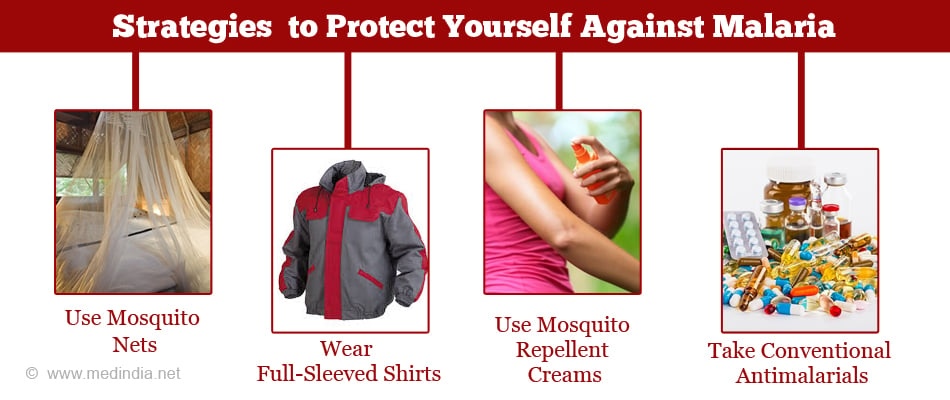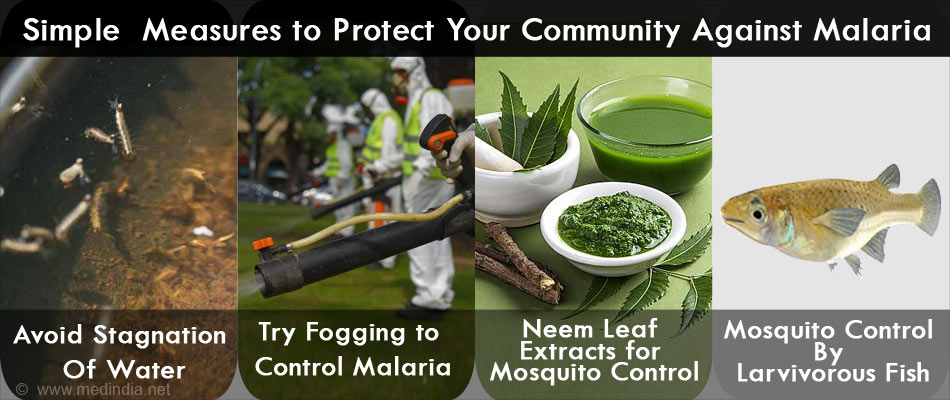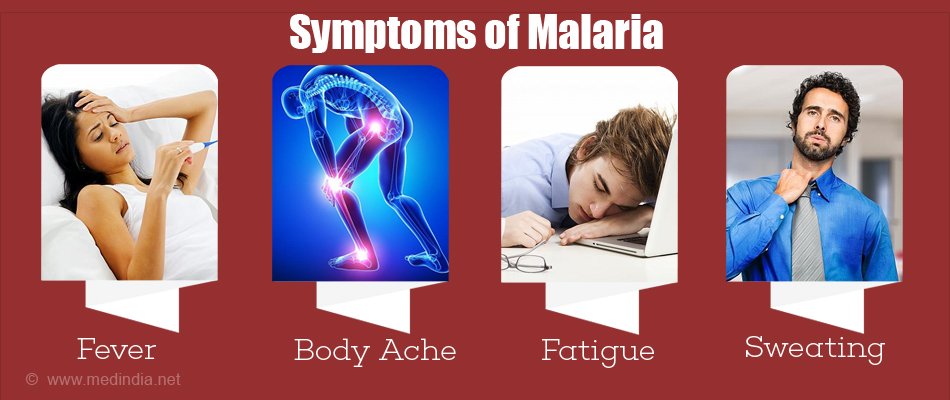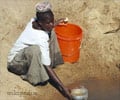- Bradley J, Ogouyèmi-Hounto A, Cornélie S, et al. Insecticide-treated nets provide protection against malaria to children in an area of insecticide resistance in Southern Benin. Malar J. 2017; 16: 225. DOI:10.1186/s12936-017-1873-1
- Malaria - (https://wwwnc.cdc.gov)
- Malaria - Prevention - (http://www.nhs.uk)
- IAMAT White Paper: How to protect yourself against malaria, 2017 Edition - (https://www.iamat.org)
- WHO IRIS: Manual on personal and community protection against malaria in development areas and new settlements - (http://www.who.int/iris/handle/10665/36942)
How Can You Protect Against Malaria?
Malaria is an endemic problem in some countries including India and if not diagnosed and treated in time, can cause undue morbidity and sometimes also have a lethal outcome.
Educating the masses on how to protect against this endemic problem is of paramount importance and should be part of the curriculum in the educational activity for all health workers in the country.
Protection against malaria can be at three levels – personal, household and community:
Personal Protection: The idea behind personal protection is to prevent mosquitoes from biting. The following strategies can be used for personal protection:
- Mosquito Nets: Using a mosquito bed net while sleeping is one of the best methods for preventing mosquito bites. Insecticide-treated bed nets (ITNs) are much more effective than untreated conventional bed nets.
- Protective Clothing: Wearing full-sleeve shirts, long trousers and hats will minimize mosquito bites. The feet should also preferably be kept covered.
- Mosquito Repellent Creams/Patches: Commercially available mosquito repellent creams can be used on the exposed parts of the body like hands, feet and neck to ward-off mosquitoes. However, it is not advisable to use these creams on the face. Alternatively, a mosquito repellent patch can be worn to keep mosquitoes at bay.
- Conventional Antimalarials: Antimalarials are available for treating as well as preventing malaria (technically termed as prophylaxis). These medicines are very potent and should only be consumed under strict medical supervision. It is of the utmost importance that the correct medicine be taken at the correct dosage, and that the course be completed. Some of the common antimalarials include Chloroquine, Amodiaquine, Sulfadoxine-pyrimethamine, Proguanil, Mefloquine, Primaquine, Halofantrine, and Artemisinin.
- Indigenous Antimalarials: Besides the conventional allopathic medicines, some indigenously developed drugs are also available. Of these, neem leaf extracts containing active drug molecules have been found to destroy the malarial parasites in the blood. However, these should be used with prudence and only if conventional medications are not available.

Protecting Your Home and Self: Many measures are available. Some common ones are listed below:
- Mosquito Screens: Wire netting can be mounted on doors and windows to block the entry of mosquitoes.
- Mosquito Repellents: Various types of mosquito coils, liquid vaporizers and mats are available in the market that can be used at home to repel mosquitoes. Placing these strategically at the entry points of mosquitoes in your home, such as doorways could effectively prevent mosquitoes from entering. However, some of these repellents generate smoke and therefore may be unhealthy, especially for children.
- Destruction of Mosquito Breeding Sites: Mosquito breeding at home can be prevented by emptying flower vases, draining flower pots, cleaning rooftop water tanks, coolers, and bird-baths at regular intervals.
- Indoor Residual Spraying (IRS): In this method, insecticides are sprayed indoors on the walls. When the spray dries, it leaves residues or traces of the insecticide on the wall. When mosquitoes sit on the wall, they are killed by the insecticide. However, this type of spraying is hazardous and should only be carried out by trained public health personnel.
Protecting Your Community: Several public health interventions can be used to protect the community as a whole against malaria. These include the following:
- Destruction of Mosquito Breeding Sites: Stagnant water should not be allowed to collect as these act as active mosquito breeding sites. Examples include potholes, discarded tyres, unused buckets, and coconut shells.
- Fogging: This method uses a thick white fog discharged by a special fogging device to “smoke out” mosquitoes from their hiding places and kill them. The fog is made artificially by firing a mixture of insecticide and water as a fine aerosol through the fogging machine. However, this method can be a health hazard, particularly if the smoke enters indoors.
- Neem as a Potential Larvicide: Studies have indicated that the extracts from neem tree seeds and leaves can be used as a mosquito larvicide. This strategy can be used to control mosquito breeding at the community level.
- Biological Control: Mosquitoes breed in water, where their early stages called larvae (sing. larva) develop. Before the larvae can mature into adult mosquitoes, they can be eaten by certain fishes called larvivorous fish such as guppy or gambusia, which exclusively feed on mosquito larvae. These fishes are effective for biological control of mosquito larvae and have been successfully used in field trials.

Know more about Malaria
What is Malaria?
The word malaria derives from the Italian contraction of “mala” (bad) and “aria” (air) meaning “bad air”, as it was initially believed to be caused by foul air emitted from swamps. The word was possibly first used by the Italian physician Francisco Torti around 1740.
However, with advancing knowledge, the above notion was disproved and it was discovered that malaria is a protozoal disease, caused by the parasite Plasmodium. There are four major species of Plasmodium – P. falciparum, P. vivax, P. malariae, and P. ovale, of which P. vivax is the most prevalent in India and P. falciparum is the most dangerous as it can cause “cerebral malaria”, which can lead to brain damage, often resulting in death.
How is Malaria Transmitted?
Malaria is spread by the bite of infected female Anopheles mosquitoes. The plasmodia enter the body of humans during the mosquito-bite and infect the red blood cells (RBCs) and the liver. The parasites mature into other forms and are subsequently taken up by another mosquito and spread further. Thus, the infection continues in a cyclic manner, alternating between the mosquito vector and human hosts.
What are the Symptoms of Malaria?
Malaria is characterized by chills, fever, body ache, fatigue, shivering or sweating. Other symptoms may include muscle pain, headache, rapid heart rate (tachycardiaz), nausea, or pallor (pale skin, lacking color).

Health Tips
- Prevent mosquito bites at all costs: Cover all exposed body parts while in malaria endemic areas.
- Always sleep inside a mosquito bed net in tropical regions where malaria is endemic: Sleeping inside a bed net is the most effective personal protective measure against mosquitoes.
- Take malaria preventive drugs before visiting malaria endemic regions: You can take mefloquine once a week, starting 1-2 weeks before traveling and continue for 4 weeks after returning from a malaria endemic region.
- Use mosquito repellent creams or patches: You can use mosquito repellent creams and patches to prevent mosquito bites while outdoors in the evening or night.
- Seek medical help if you have symptoms of malaria: Remember that early diagnosis and prompt treatment are very important for preventing complications arising from malaria. Therefore, consult a doctor immediately if you have symptoms of malaria.









